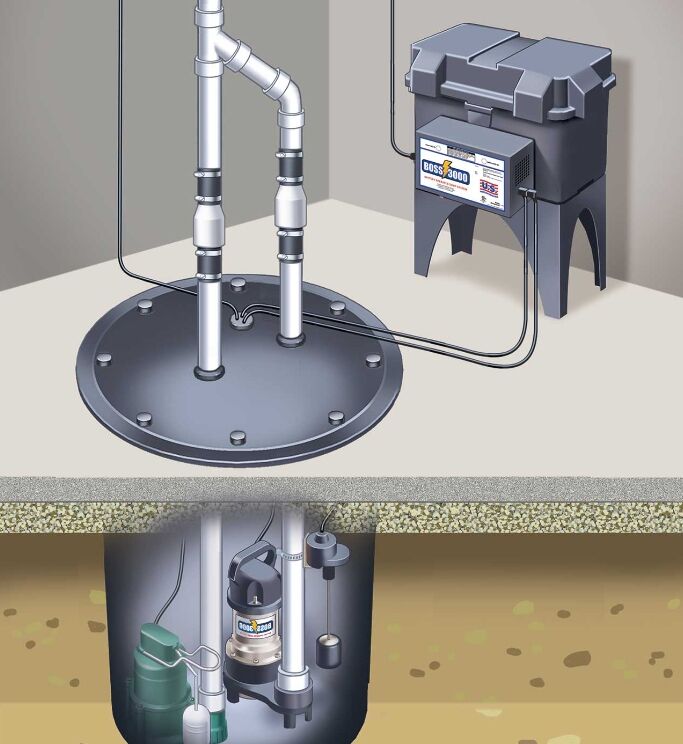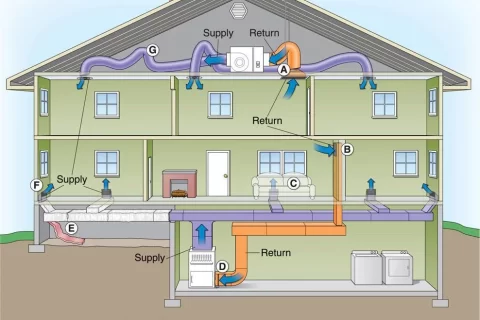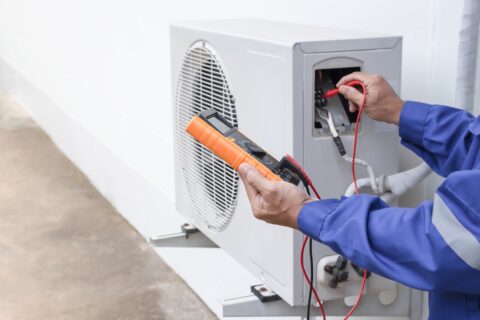Upgrading Your Home’s Sump Pump System: Essential Steps and Benefits
Key Takeaways
-
Properly upgrading your home’s sump pump system is very important. Properly maintained, it protects your home from costly water damage and keeps your basement dry even in the worst rainstorms. A smarter system means better performance and greater peace of mind.
-
Today’s sump pumps are much more efficient and reliable. They come with high-tech features such as smart technology, battery backup systems, and automated alerts that improve functionality and safety.
-
Additionally, aging or malfunctioning sump pump systems lead to dangerous outcomes with frequent failures, water intrusion, and expensive restoration and repairs. Smart, proactive upgrades can nip these problems in the bud before they become life-or-death emergencies.
-
Climate change is making storms more intense and more frequent. This makes it even more crucial to upgrade your home’s sump pump system so it can deal with greater water amounts efficiently.
-
When making an upgrade, pay attention to pump type, capacity, horsepower, and material durability. Consider backup power options and advanced features to get the best performance and value out of the system over the long haul.
-
Clean the sump pit regularly. Test the backup power source to ensure your upgraded sump pump system works when it’s needed most. Inspect and address problems to keep it working properly and flood-free.
By upgrading your home’s sump pump system, you can not only save money but prevent your basement from costly water damage. Today’s systems come equipped with features such as backup power, increased pumping capacity, and smart monitoring capabilities. These improvements make your home’s sump pump system fail-safe, even in the heaviest of rainstorms or surprise floodings.
The quicker you can move water with a higher-capacity pump, the less chance you have to overflow. Automatic backup systems, such as battery-powered pumps, ensure that everything continues to function even during a power failure. Smart sump pumps, for example, send you alerts when water levels rise, allowing you to check in on your system from your smartphone.
Together with these other improvements, your home will be warm, dry, and safe—even in the face of extreme weather. Investing in an upgraded sump pump system is a practical step toward long-term protection and peace of mind for homeowners.
What Is A Sump Pump System
A sump pump system is the heart of any effective basement and crawlspace water management system. It stops water from accumulating in at-risk places. These locations are frequently in jeopardy during intense rain events or spring snowmelt.
At the center of this system is the sump pit. This basin, located at the lowest point of your home, collects the excess water. This pit serves as a collection base. It stops water from creeping all over the basement floor or leaking into the foundation.
There are two main types of sump pumps: submersible and pedestal. Submersible pumps are more compact and sit directly inside the sump pit, out of sight. They are extremely effective to have but usually only last around 10 years.
Pedestal pumps sit above the pit with a visible motor. They might take up more room but they are low maintenance. Properly cared for, they can last 30 years or more, making them an economical option.
A dependable sump pump system is your first line of defense in protecting your home. In sum, it serves as a protective barrier against the destructive consequences of water damage, such as mold, structural deterioration, and expensive repairs.
In areas prone to heavy rain, like Chicago, having a sump pump isn’t just practical; it’s often a legal requirement under the 1987 US Federal Clean Water Act.
Purpose Of A Sump Pump
The main purpose of a sump pump system is to keep water away from your house’s foundation. In doing so, it prevents flooding in basements and helps eliminate the growth of mold and mildew, which flourish in wet environments.
This is especially important for households with allergy sufferers or people with respiratory conditions. When heavy rain falls, the need for a sump pump becomes critical. It helps lower the likelihood of flooding in your home while greatly increasing the overall safety of your house.
Without it, water damage can result in expensive restorations, from mending cracked foundations to replacing ruined possessions.
How It Works In A Home
The sump pump works from inside the sump pit. When water levels increase, a float switch or sensor turns on the pump. The motor kicks on and sucks the water up and away through a discharge line.
It then pumps the water deep outside the home’s foundation. The discharge line prevents water from flowing back towards the foundation. It’s a perfect fit in conjunction with other drainage solutions, like gutters and downspouts.
Combined, these systems protect your home and your investment, even in the worst weather Mother Nature can throw at you.
Why Upgrade Your Sump Pump System
Prevent Flooding And Water Damage
A dependable sump pump is your first line of defense against basement flooding. Water intrusion can occur due to excessive rainfall, rapid snowmelt or as the result of a rising water table. An improved system addresses all of these problems by more effectively redirecting water away from your home.
For example, new pumps have better motor power to deal with increased water loads in storms. Keep your basement dry to keep your home safe – upgrade your sump pump system! Save yourself from those expensive repairs caused by water-damaged walls, floors, and personal belongings.
It’s safe to say that a functioning sump pump will greatly minimize the chance of mold and mildew. This upgrade goes a long way to keeping indoor air healthier. This peace of mind is worth an upgrade all by itself.
Improve System Efficiency And Reliability
Replacing your old sump pump with a new model that’s specifically designed for energy efficiency will save you money. It’s an energy upgrade that saves up to 90 percent of energy costs over previous models. Most new systems include the latest technology, such as smart sensors that kick in the pump only when required, minimizing wear and tear.
Benefits like backup battery systems and alarms further enhance reliability during unexpected power outages or equipment failures. Beyond saving on utility bills, a more efficient pump enhances overall plumbing performance, ensuring your home stays dry and protected.
Address Aging Or Malfunctioning Systems
Old sump pumps frequently start to sound odd. They either short cycle constantly or can’t pump water out efficiently. Putting off these problems can result in performance failures, catching you off-guard at the worst times – like when a major storm rolls in.
Replacing it with a newer unit immediately addresses these issues and cuts down the amount of ongoing maintenance required. New systems are designed for greater capacity workloads, giving you systems that last longer and are less prone to breakdowns through the years.
When you take proactive measures, you can save yourself the stress and expense of emergency replacements.
Adapt To Changing Weather Patterns
As heavy rainstorms increase in frequency, your sump pump will face higher water volumes and should be able to soak them up. Newer systems have greater pumping capacities and materials less prone to corrosion. These features together are what make them so highly effective in extreme weather conditions.
These upgrades help ensure that your home is better equipped to handle the unforeseen, often unstable impacts of our changing climate. Avoid being caught off guard by these dangers—upgrade your sump pump system today to safeguard your property.
By showing your commitment to long-term maintenance, you increase its overall value.
Factors To Consider When Upgrading
1. Determine The Right Pump Type
When selecting a reliable sump pump, start by understanding the two main types: submersible and pedestal. Submersible pumps are installed directly in the sump pit, submerged in water, making them more subdued and less intrusive. These efficient sump pumps are perfect for finished basements or other quiet zones where noise is an important consideration.
Pedestal pumps mount the motor out of the sump pit, above the water level. This design supports easy maintenance and generally helps minimize costs. The choice between the two types depends on your home’s conditions. If you have a small basement, a submersible pump may be a better fit for your needs, especially if you want a low-profile system.
When ease of maintenance and budget-conscious choices are your top priorities, a pedestal pump may fit the bill. It’s crucial to understand how the type of pump you choose affects installation. Submersible pumps will require a bigger pump pit, while pedestal pumps will need less space.
Confirm that the pump is appropriate for your application. Be mindful of your local water table level and past flooding patterns in your community to ensure you select the right sump pump for your property.

2. Assess Pump Capacity And Horsepower
The capacity of a sump pump is indicated in gallons per hour (GPH). First, determine the square footage of your basement. Finally, think about what the normal flow should be during a heavy rain and how much capacity you need for that flow. A 1,000-square-foot basement in a community that floods every few years will need a powerful sump pump.
Choose one with at least a 2,000 GPH capacity. Horsepower (HP) is a key consideration as well. Larger HP ratings enable the pump to evacuate large amounts of water in a short time. A 1/3 HP pump generally suits most homes, but if your area experiences significant rainfall or your home sits in a low-lying location, a 1/2 HP or 3/4 HP pump might be necessary.
By selecting a pump with proper capacity, facilities can take action to avoid flooding and other damage during peak water levels and keep operations running smoothly.
3. Evaluate Backup Power Options
Power outages are a common aftereffect of storms, so ensuring that backup power is available to keep operations online 24/7 is critical. Battery backup systems have become the most common home power storage option, and they usually protect the home for 6-12 hours during an outage. As an example, a lead-acid battery will meet modest needs, while lithium-ion batteries will provide a longer duration service.
Other alternatives are water-powered backup systems that work off municipal water pressure. These are great in places with a robust and reliable supply of water, but they demand a lot of water to be effective. Smart battery backups with self-diagnostic alerts provide another level of accountability, helping make sure your system is always up and running—even in emergencies.
4. Check For Advanced Features
Newer sump pump systems now include features that enhance their functionality, such as the reliable sump pump with smart technology that allows remote monitoring through an app. This gives homeowners a clear view of performance—even when they’re not on the property. Most systems also come with automatic testing and alerts, notifying you of developing problems before they worsen or become more costly, making them an efficient sump pump solution.
Thermal protection automatically shuts down the machine in the event of overheating, while alarms alert the operator when water levels get too elevated. These enhancements not only increase convenience and safety but also provide peace of mind during heavy rains, helping to prevent potential property damage.
An upgrade like a smart battery backup sump pump with remote monitoring can alert you to problems, allowing for quicker identification and response, ensuring your finished basement remains dry and safe from flooding.
5. Consider Material Durability And Quality
The quality of the materials used to manufacture a sump pump relates directly to how long the sump pump will last. Cast iron and stainless steel are very durable, corrosion-resistant materials that are ideal for permanent installations. Plastic or lower quality pumps generally save up-front costs but tend to have shorter life cycles.
Selecting quality materials makes sure the pump has the ability to handle large volumes of water for many years. Choices that resist corrosion are especially useful in places where hard water or high mineral content is an issue. Choosing durable equipment will help protect against replacement costs and ensure that equipment is ready to perform when it truly matters.
6. Review Noise Levels And Performance
Noise levels may be an important consideration, particularly if the pump will be located close to habitable structures. Submersible pumps are generally quieter than pedestal pumps. For instance, a pump that incorporates sound-dampening features will be a big help in cutting down noise.
Performance metrics such as pumping capacity and pumping efficiency are an indicator of reliability. Choose Energy Star-rated pumps to save energy without sacrificing efficiency. A notably quieter pump with proven energy-saving efficiency makes your home more comfortable while protecting your basement more efficiently.
7. Analyze Cost And Budget
|
Pump Type |
Average Cost |
Installation Cost |
Maintenance Cost |
|---|---|---|---|
|
Submersible |
$150-$400 |
$200-$600 |
$100-$200/year |
|
Pedestal |
$100-$300 |
$150-$400 |
$50-$150/year |
|
Battery Backup |
$200-$500 |
$300-$800 |
$50-$100/year |
When planning and budgeting, consider upfront costs against ongoing maintenance and reliability over the long-term. A pump with a good warranty and smart technology may look costly upfront but is a better long-term value.
Prioritize reliability to avoid the need for frequent costly replacements, and build in added features such as backup power for added resilience during outages.
Step-By-Step Guide To Upgrade
1. Inspect The Existing System
Before diving in, do a little inspection on your current sump pump system. Look for other signs of damage, such as rust, cracked concrete or a leak around the sump basin.
Look for warning signs like odd sounds or the pump running constantly. A pump that doesn’t turn off may burn out quickly, raising repair costs and energy bills.
If water is gathering around the unit, it could indicate a blocked discharge line or an eroded motor. Routine professional inspections, such as those provided by Pioneer, can help identify minor issues before they become big headaches.
Professionals will be able to spot lurking problems, like motor burnout or electrical failures, which you may overlook.
2. Choose A Suitable Replacement Pump
Choosing the proper pump is extremely important. For the average residential home, a 1/3 HP pump can pump about 2,500 gallons per hour (GPH).
That outflow rate is more than adequate to handle normal water levels. If your basement is prone to severe flooding, a submersible pump may be the best choice, as it operates underwater and can handle high volumes of water quickly.
Ensure you choose a pump compatible with your basin size—at least 3 feet in depth and flush with the basin floor.
3. Gather Necessary Tools And Materials
It all preparation saves time in the long run. Common tools and supplies are listed as pliers, PVC pipe, wrench, level, and silicone sealant.
You’ll still require a check valve to ensure that water cannot flow back into the basin.
4. Disconnect The Old Sump Pump
Switch off the electricity to prevent the risk of electrical shock. Disconnect the pump from the discharge pipe and pull it out gently.
Look for residual water in the basin. A shop vacuum or wet/dry vacuum can remove it easily.
5. Install The New Sump Pump
Align the new pump carefully on the basin to avoid seal damage. Connect the discharge pipe tightly and install a check valve to improve pumping efficiency.
Fill these gaps in with silicone to prevent any leaks. Ensure that the unit is level so that it will operate properly.
6. Test The New System Thoroughly
Restore power and slowly pour water into the basin to create a flood condition. Make sure the pump turns on right away and pumps out water quickly.
Test the check valve to make sure that backflow isn’t occurring. If something doesn’t look right, ask a Pioneer plumber to help you get the best performance from your system.
Maintenance Tips For Your New System
Perform Regular Inspections
It’s very important that you inspect your sump pump system regularly. Inspect for other signs of wear, including cracks in the pump casing or loose connections in the discharge pipe. A proper sump lid is essential—ensure it fits snugly to prevent dirt and leaves from entering the pit.
Have a professional inspection scheduled at least once a year. It will save you time diagnosing problems like motor burnouts, dirty filters, or backup power supplies that weren’t installed correctly. Maintenance professionals typically charge 10%-20% of initial cost.
Making a point to invest in day-to-day maintenance will prevent you from experiencing the costly shock of emergency repair.
Clean The Sump Pit Periodically
Dirt, gravel and other debris can build up in the sump pit over time, possibly clogging the pump. To prevent this from happening, scrape down the pit every couple of months. Clear away any visible debris and flush the system.
Pouring 5 gallons of water into the pit will also turn on the pump, making sure everything works like a well-oiled machine. A clean sump pit will allow your system to run more efficiently and put less strain on your motor.
Test The Backup Power Source
Having backup power is essential when you need it during outages, so regularly test your equipment. If you use a battery backup, ensure that it is fully charged and replace the battery as directed.
If your system is generator-based, check for proper connection and fuel, too. Routine testing during annual maintenance offers peace of mind.
Monitor For Unusual Noises Or Issues
Strange noises can indicate issues such as an unbalanced impeller or bearing failure. If your pump has unsealed bearings, lubricate them annually to prevent premature wear.
Address these small concerns upfront to help your sump pump last longer. Keep in mind, most sump pumps should be replaced every 10 years, regardless of outward condition.
Benefits Of A Modern Sump Pump System
Enhanced Flood Protection
With a modern sump pump system, you can enjoy reliable protection against basement flooding. This problem often occurs in places that receive large amounts of rainfall or snowmelt. These systems safely and effectively remove water from your basement. They help ensure your home’s foundation and structure are protected from water damage.
For example, Everdry Waterproofing, with over 40 years of experience and 80,000 completed jobs in the Greater Green Bay area, uses patented waterproofing methods proven to meet the highest standards. That’s even more valuable in cold-weather months when freezing conditions can cause expensive flooding. A reliable backup system provides an even greater peace of mind. It protects against potential flooding even during power outages, which means less stress and more peace of mind for you.
Increased Home Value And Safety
Repairing or replacing your old sump pump with a modern system can help make your home more marketable and safe for your family. By stopping water-related damage in its tracks, it keeps your home’s foundation and important systems such as your HVAC in good shape for years to come. Having a modern, well-maintained sump pump system is a sign of proactive care and concern, something that homebuyers appreciate.
Everdry Waterproofing operates locally in markets such as Appleton, WI. Their expertise has proven that these improvements result in long-term savings and more valuable properties. This investment goes a long way towards creating a more healthy and safe living environment by minimizing the chance of exposure to harmful mold and mildew.
Lower Long-Term Maintenance Costs
Modern sump pump systems are more durable, reducing the need for replacement and repair. By designing for more advanced sump pumps with longer lifespans, homeowners are spared the expenses of replacing older systems again and again. Backup systems continue to minimize maintenance by providing reliable service even in extreme conditions.
By keeping basements dry and protecting homes from water damage, these systems prevent expensive damage to other home systems, including air conditioning units. Everdry Waterproofing’s solutions focus on the long-term efficiency, backed by third-party accreditations that ensure long-term effectiveness. That smart approach not only delivers permanent solutions, but more bang for your buck.
Conclusion
By upgrading your home’s sump pump system, you provide your home with more effective protection against the dangers of water damage. A new system better manages heavy rain storms, lowers the chances of basement flooding, and operates much more efficiently. It prevents mold from growing and protects your valuables. When your home has the proper system installed, you experience peace of mind whenever storms and wet seasons roll in.
Starting with the best system and properly installing it makes all the difference. A little routine maintenance goes a long way to ensuring it operates efficiently, preventing you from facing expensive emergency repairs. A little investment today pays off big with peace of mind tomorrow.
If you’re ready to improve your home’s sump system, begin mapping your upgrade out now. Improved safety, reduced stress, and peace of mind with a reliable pump system are all well deserved. Don’t leave your home’s protection to chance—upgrade with purpose!
Frequently Asked Questions
What is a sump pump system?
An efficient sump pump system upgrade helps homeowners avoid costly damage and repairs by automatically pumping water out of a sump basin and away from the property. This reliable sump pump is especially crucial for homes in areas with heavy rains or a high water table.
How do I know if I need to upgrade my sump pump?
Frequent breakdowns, slow drainage, or an inability to manage heavy rainfall are sure signs you should consider a sump pump upgrade. If your reliable sump pump is more than a decade old, it’s time to get a new one.
What factors should I consider when upgrading my sump pump?
When choosing a reliable sump pump, consider the horsepower, capacity (gallons per hour), type (submersible or pedestal), and available backup options like a smart battery backup system to ensure efficient water management.
How long does it take to upgrade a sump pump system?
Upgrading your home’s sump pump system, whether it’s a reliable sump pump or an efficient sump pump, usually only takes 2–4 hours for a qualified pro.
How do I maintain my new sump pump system?
To ensure your reliable sump pump functions optimally, test it every few months by pouring water into the sump basin, while also monitoring the discharge line for clogs and removing debris build-up.
What are the benefits of a modern sump pump system?
Newer systems are more efficient, durable, and quieter. They keep your home safe from water damage, and most come with a battery backup as an added precaution during power outages.
Can I install a new sump pump system myself?
Yes, but without professional installation of a reliable sump pump system, you risk improper setup and long-term efficiency. If you don’t know what you’re doing, it’s best to leave the work to a professional to avoid making expensive errors.


